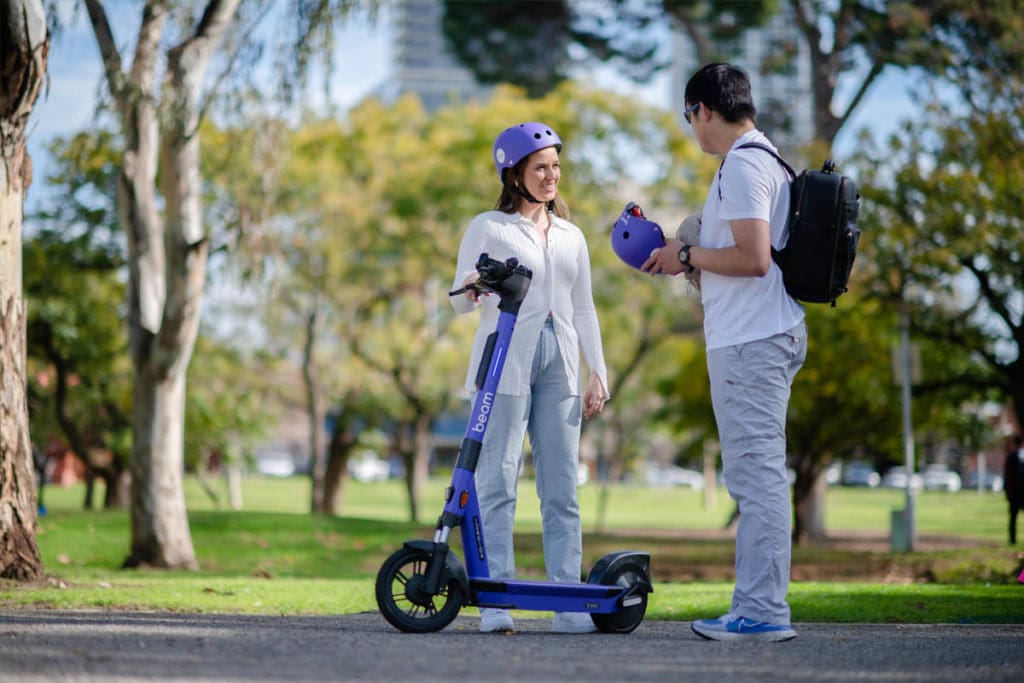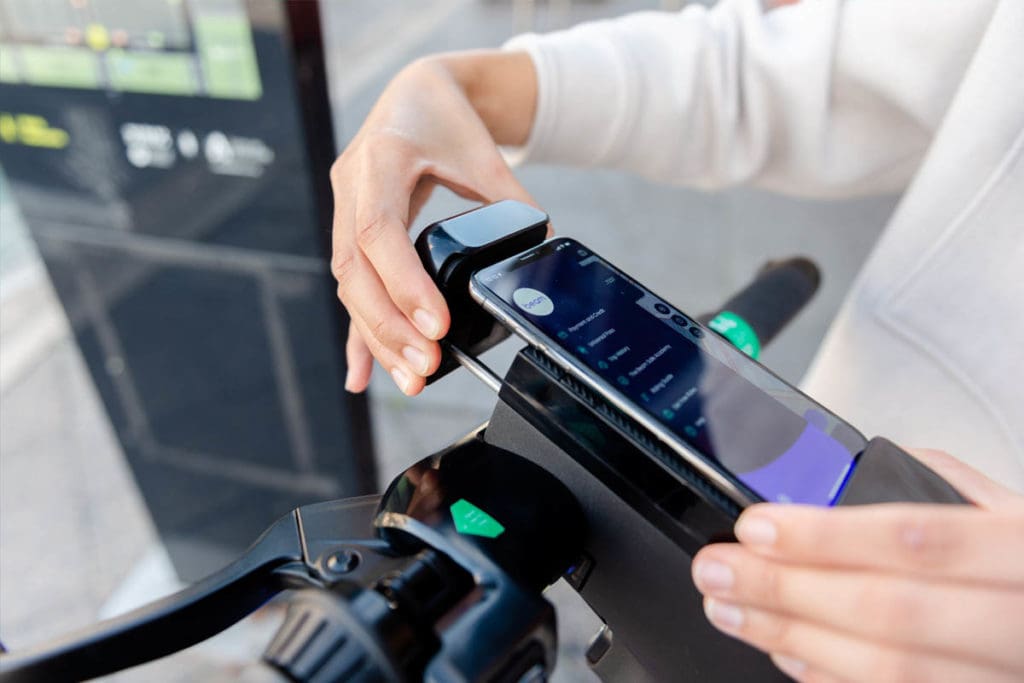Beam Unveils Saturn 5 Scooter

Wellington, NZ
A leading provider of micromobility share services in Australia, Beam, has unveiled its latest e-scooter, the Saturn 5, which it says has been developed for its more mature share service markets.
The fifth-generation e-scooter is being rolled out initially in NZ capital city Wellington and caters for longer commuting journeys, according to a statement from Beam.
“The result is centimetre-perfect position accuracy, ensuring riders remain inside local council and government-approved micromobility vehicle use zones, and swift action as the rider moves between zones with differing restrictions.”
It says the Saturn 5 features larger wheels, front and rear, to insulate riders from uneven roads and pavements, has a battery life of up to 120km, the longest capacity of any vehicle in the shared micromobility space.
They also provide wireless phone charging and auditory alerts, as well as upgraded IoT (internet of things) including improved geo-fencing capabilities to ensure safe operation.
Beam says the improved IoT doesn’t just feed off satellites but also gathers information from the vehicle’s own systems.
“The result is centimetre-perfect position accuracy, ensuring riders remain inside local council and government-approved micromobility vehicle use zones, and swift action as the rider moves between zones with differing restrictions,” it says.
The Saturn 5 has narrower handlebars compared to the previous generation, to provide better grip and quicker access to the safety features alongside the handlebars, including the brake levers, left and right indicators, and bell.
The Saturn 5 also features new-generation clear audio messaging, with safe riding reminders and riding zone changes now delivered audibly as well, so riders can listen to instructions and don’t have to take their eyes off their journey.
For riders who prefer visual cues, the Saturn 5 conveys riding notifications when entering and leaving slow zones, no parking zones and other riding areas, via an on-screen display.
“We deliver these instructions in our app as well, especially for those who are hearing impaired, but we’ve also found the audible alerts increase rider compliance with the riding rules, and the on-screen display provides an additional cue,” Beam’s ANZ general manager, Tom Cooper, said.
The Saturn 5 unveiling comes as new research from the company reveals 40% of Beam riders are more likely to consider public transport as an option for long journeys – over cars or ridesharing – if they have the option to use e-scooters and e-bikes for first and last mile transport.
Forty-eight percent of Beam riders reveal they already utilise e-scooters and e-bikes for their first and last-mile connections, with 22% of Beam riders saying they “always” or “usually” do as part of their trips in the city.
The new scooter release also precedes Beam’s upcoming e-bike trial in Wellington, using its Apollo bikes.

Path Detection Technology
Beam also announced last week it has begun integrating its path detection technology, Pedestrian Shield, onto 200 its Auckland e-scooter fleet.
Pedestrian Shield, powered by Drover AI’s PathPilot product, detects whether an e-scooter is travelling on a road, footpath or bicycle lane.
Beam plans to initially use information from that detection for potential customised education and enforcement for riders, as well as assisting policy makers with urban planning.
It says in a second phase of the roll-out, scheduled for later this year, e-scooters integrated with Pedestrian Shield will have the capability to cap riders at different maximum speeds depending on surface area.
For example, a rider will be allowed higher maximum speeds when riding on a bike path or road than on the footpath.
Tom said: “The integration of Pedestrian Shield will happen in gradual stages, to ensure the highest degree of accuracy in surface detection for the safety of Auckland’s road users.
“With Beam’s current permit in Auckland running to 2024, this gives us an opportunity to increase our investment in e-scooter technology across the city, including even more industry-first features which we look forward to introducing to Auckland first in the coming months.”
